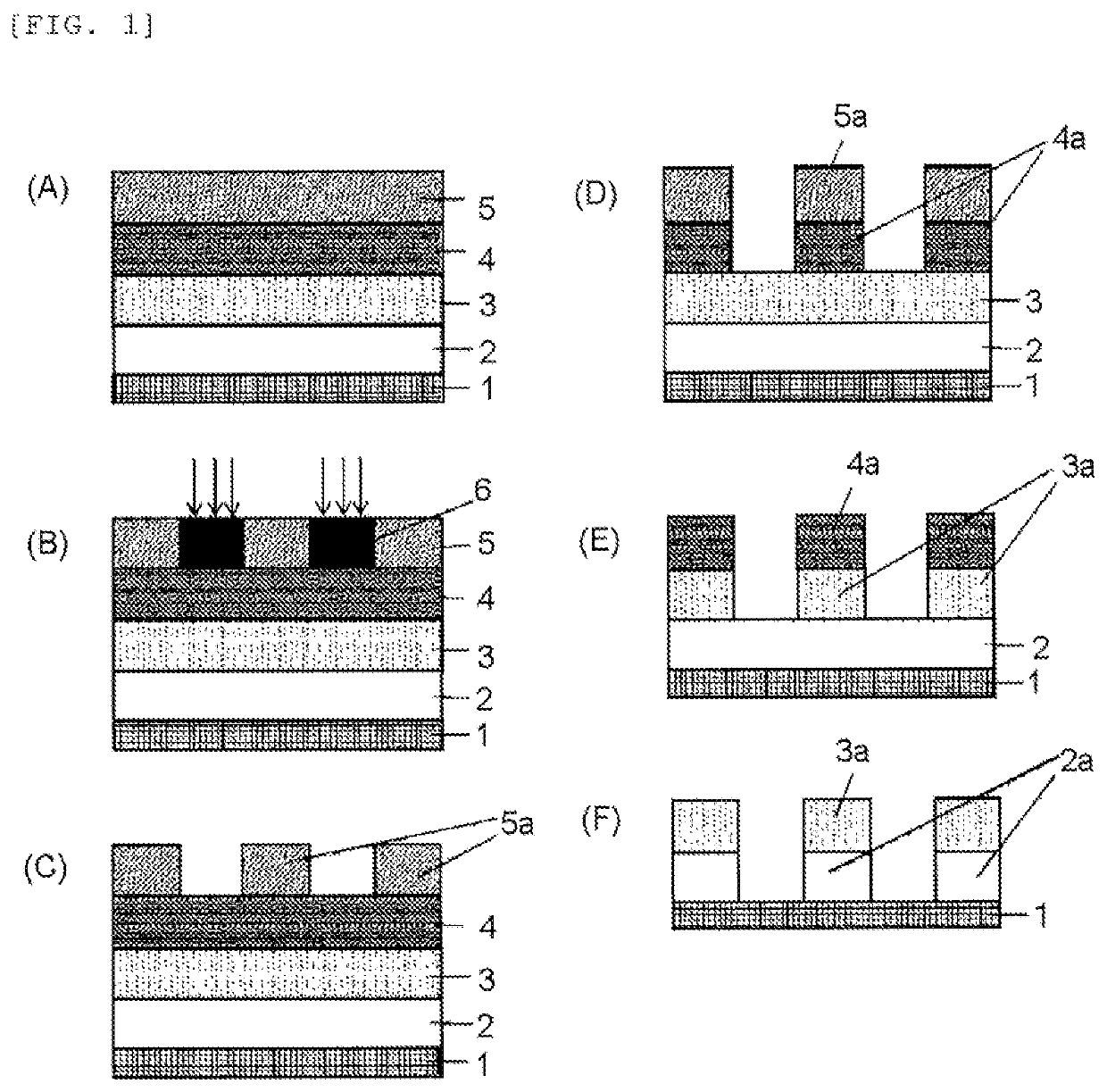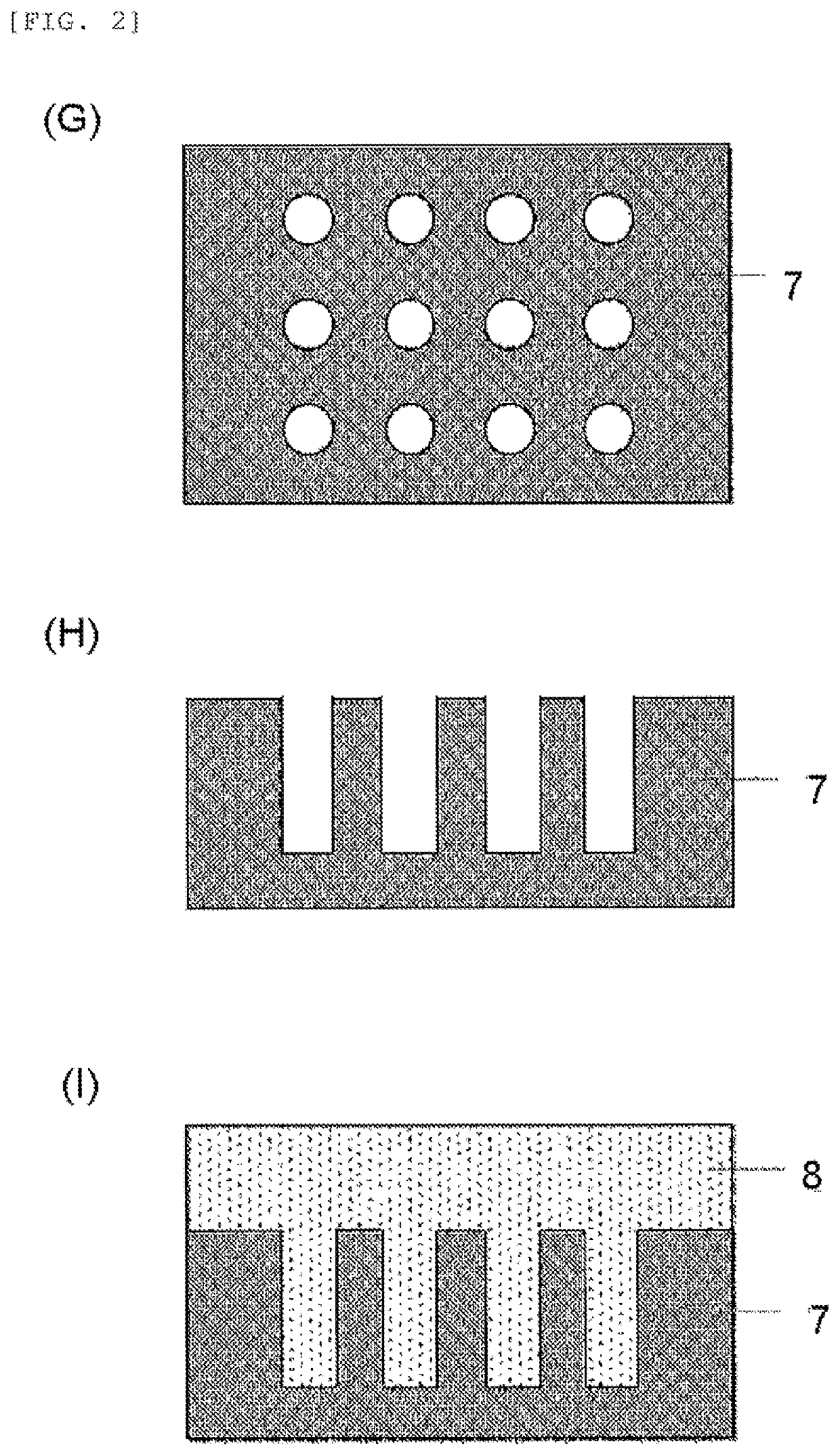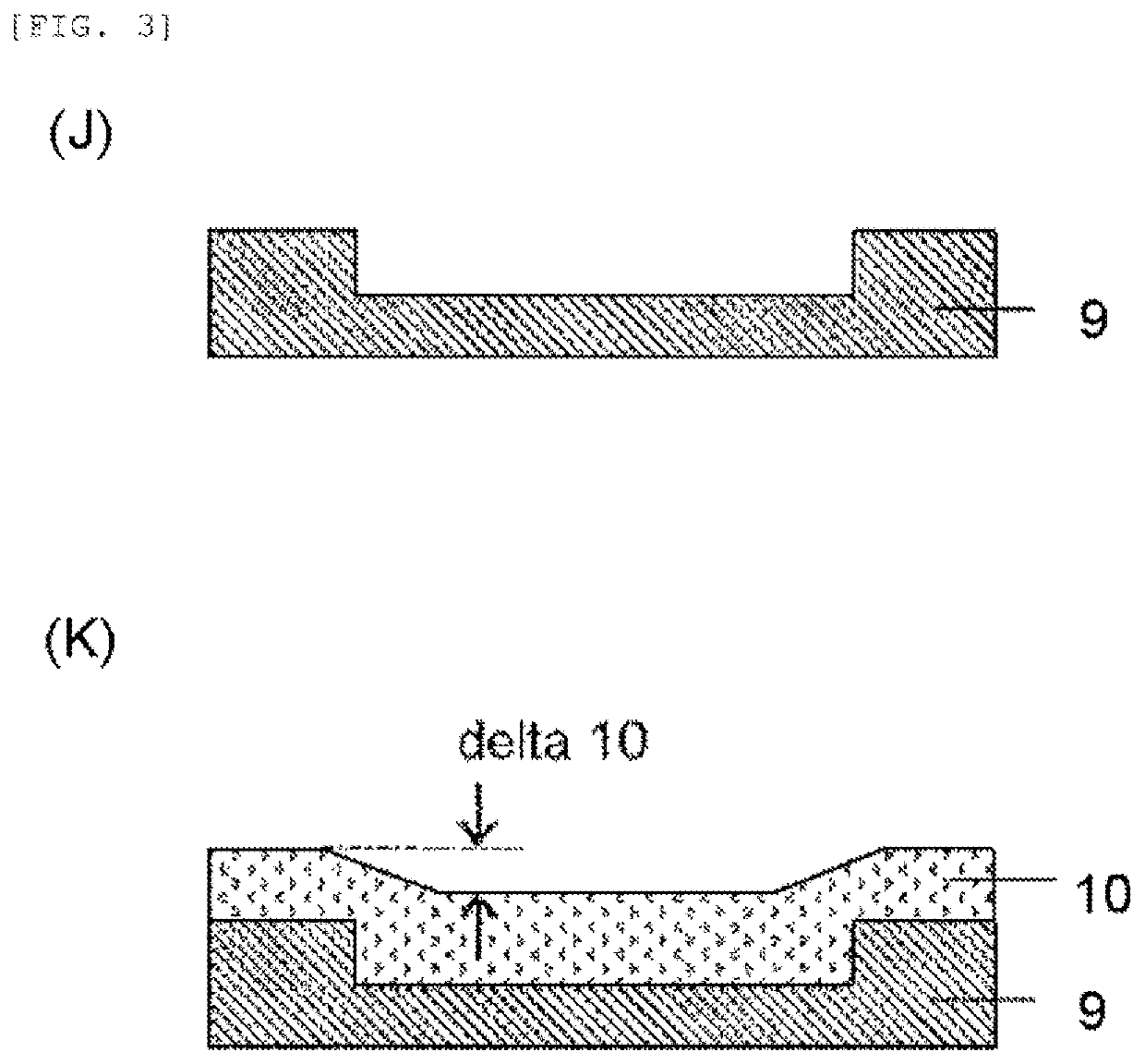Resist underlayer film material, patterning process, and method for forming resist underlayer film
- Summary
- Abstract
- Description
- Claims
- Application Information
AI Technical Summary
Benefits of technology
Problems solved by technology
Method used
Image
Examples
synthesis example 1
[Synthesis Example 1] Synthesis of Compound (D1)
[0196]
[0197]A homogeneous solution of 12.44 g of a triple-bond-containing carboxylic acid compound (A1), 1.46 g of a carboxylic acid compound (BI) containing a phenolic hydroxy group, 16.10 g of an epoxy compound (C1), and 60 g of 2-methoxy-1-propanol was formed under a nitrogen atmosphere at an inner temperature of 100° C. by stirring. Then, 1.00 g of benzyltriethylammonium chloride was added, and was stirred at an inner temperature of 110° C. for 12 hours. After cooling to room temperature, 200 ml of methyl isobutyl ketone was added, and the resultant was washed twice with 100 g of a 1 wt % aqueous ammonia solution, twice with 100 g of a 3% aqueous nitric acid solution, and five times with 100 g of ultrapure water in this order. The organic layer was evaporated under reduced pressure to dryness to obtain compound (D1).
[0198]When the weight-average molecular weight (Mw) and dispersity (Mw / Mn) were measured by GPC, the results were: Mw...
synthesis example 21
[Synthesis Example 21] Synthesis of Comparative Polymer (R5)
[0201]
[0202]4.11 g of a carboxylic acid compound (84) containing a phenolic hydroxy group, 12.69 g of a 3,3′-dithiopropionic acid, 20.00 g of an epoxy compound (C4), and 1.00 g of tetrabutylphosphonium were dissolved in 60 g of 2-methoxy-1-propanol. Then, the resultant was stirred under a nitrogen atmosphere at an inner temperature of 105° C. for 24 hours. After dissolving until room temperature, the resultant was evaporated under reduced pressure to dryness to obtain a polymer (R5) having a phenolic hydroxy group in a terminal structure. When the weight-average molecular weight (Mw) and dispersity (Mw / Mn) were measured by GPC, the results were: Mw=3300; and Mw / Mn=1.78.
Preparation of Resist Underlayer Film Materials (UDL-1 to -18, Comparative UDL-1 to -5)
[0203]The following were used: the compounds (D1) to (D16) and (R1) to (R5); (S1) tripropylene glycol monomethyl ether having a boiling point of 242° C. and (S2) 1,6-diacet...
example 1
esistance Evaluation (Examples 1-1 to 1-18, Comparative Examples 1-1 to -1-5)
[0204]The resist underlayer film materials (UDL-1 to -18, comparative UDL-1 to -5) prepared above were each applied onto a silicon substrate and baked at 250° C. for 60 seconds. Then, the film thickness was measured. A PGMEA solvent was dispensed thereon, left to stand for 30 seconds, spin-dried, and baked at 100° C. for 60 seconds to evaporate the PGMEA solvent. The film thickness was then remeasured. Solvent resistance was evaluated by determining the difference between the film thicknesses before and after the PGMEA treatment. Table 9 shows the results.
TABLE 9FilmResistFilmthicknessunder-thicknessafterlayerafter filmPGMEAb / a ×Bakingfilmformation:treatment:100conditionsmateriala (Å)b (Å)(%)(° C.)Example 1-1UDL-12014198998.8300° C. × 60 sec.Example 1-2UDL-22004200099.8250° C. × 60 sec.Example 1-3UDL-31998199499.8250° C. × 60 sec.Example 1-4UDL-42004200099.8250° C. × 60 sec.Example 1-5UDL-51995199299.8250° ...
PUM
 Login to View More
Login to View More Abstract
Description
Claims
Application Information
 Login to View More
Login to View More - R&D
- Intellectual Property
- Life Sciences
- Materials
- Tech Scout
- Unparalleled Data Quality
- Higher Quality Content
- 60% Fewer Hallucinations
Browse by: Latest US Patents, China's latest patents, Technical Efficacy Thesaurus, Application Domain, Technology Topic, Popular Technical Reports.
© 2025 PatSnap. All rights reserved.Legal|Privacy policy|Modern Slavery Act Transparency Statement|Sitemap|About US| Contact US: help@patsnap.com



